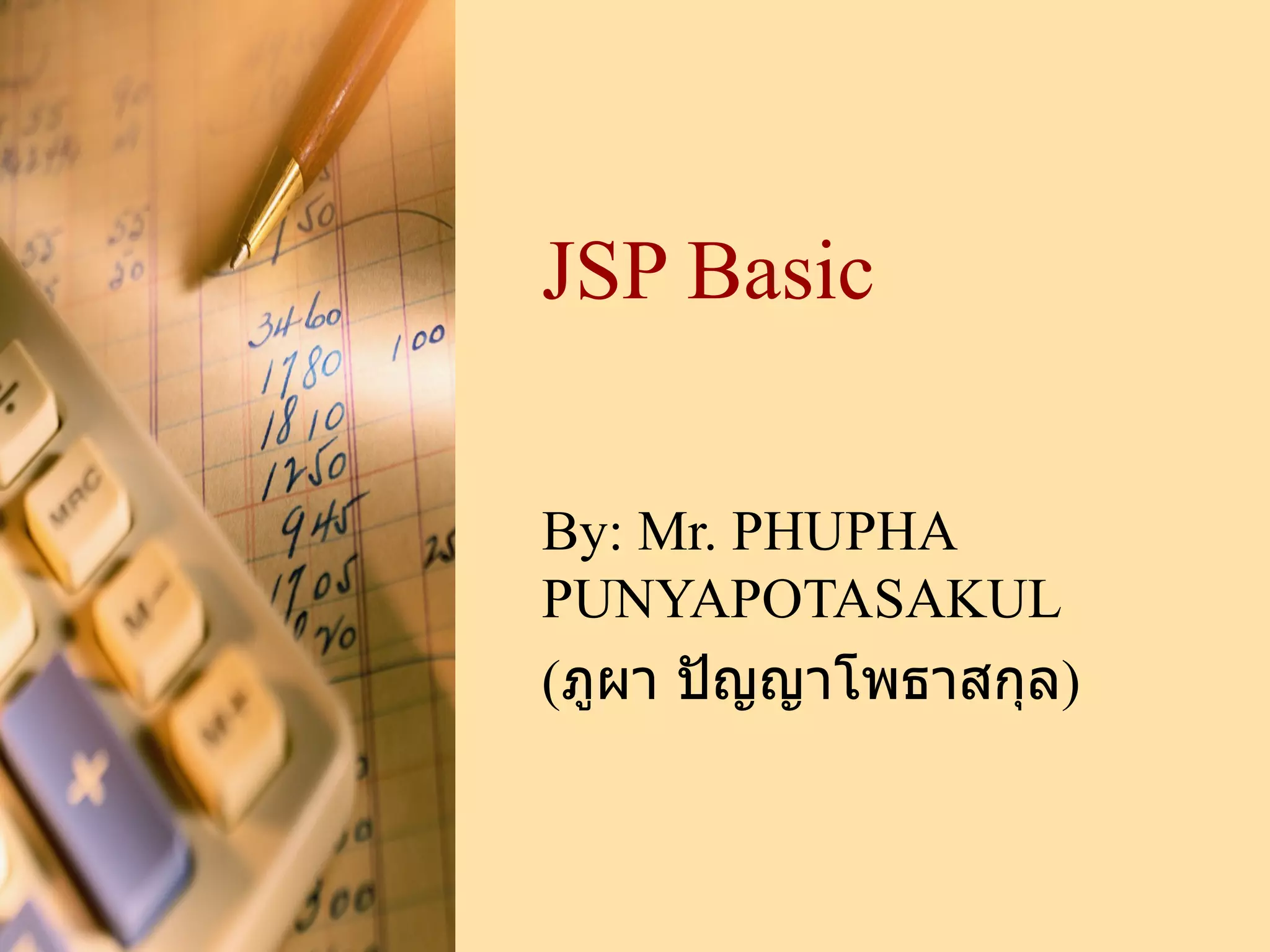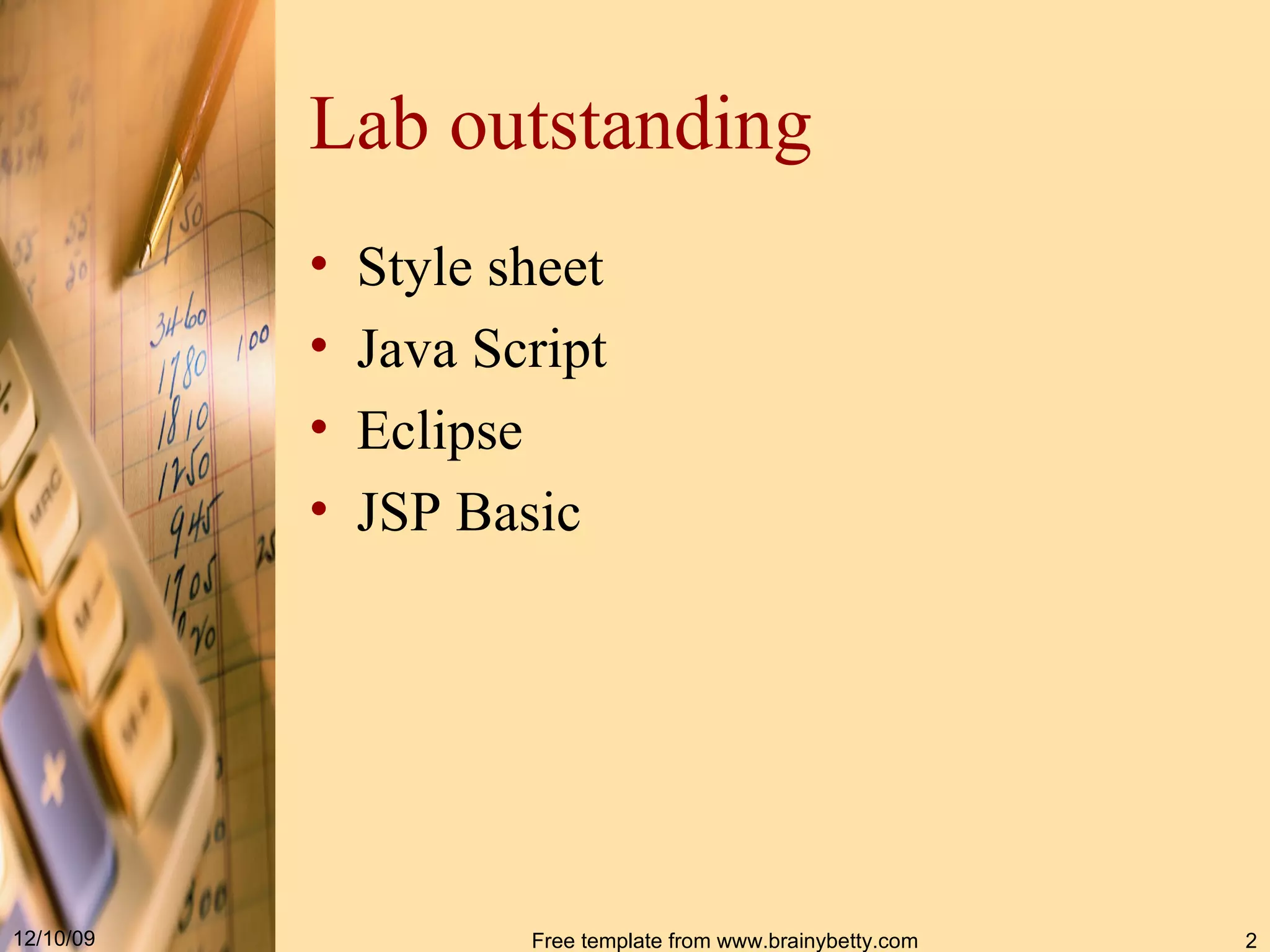The document outlines a basic JSP (JavaServer Pages) curriculum created by Mr. Phupha Punyapotasakul, including a roadmap for lectures and assessments. It provides detailed information on JSP syntax, constructs, and how to integrate JavaBeans, along with directives and predefined variables. Additionally, it covers practical examples and guidelines for using JSP within an Eclipse and Tomcat environment.























